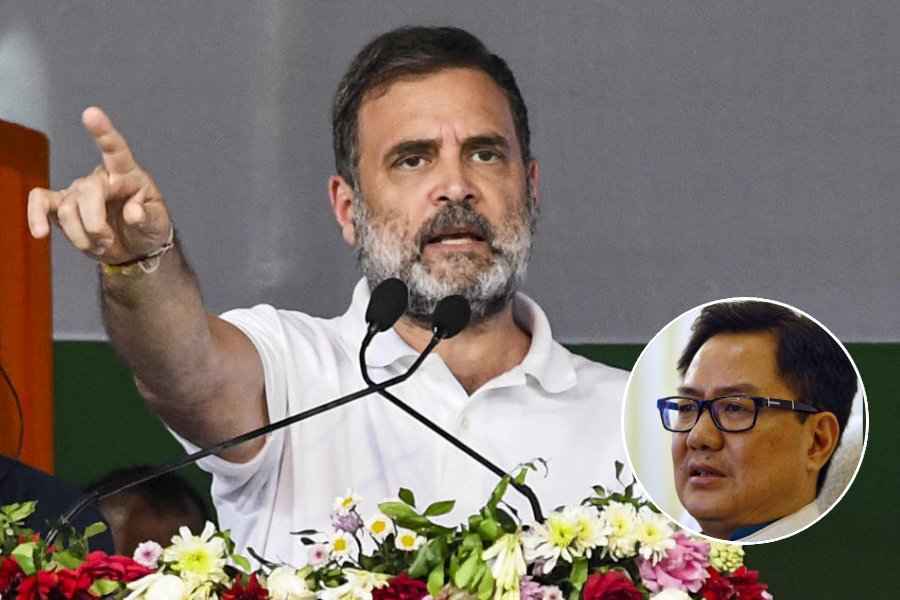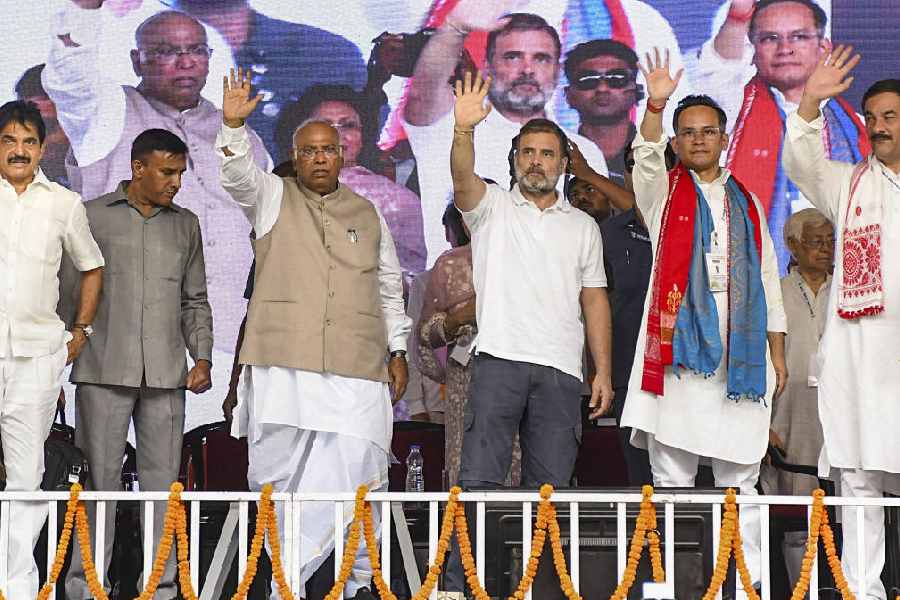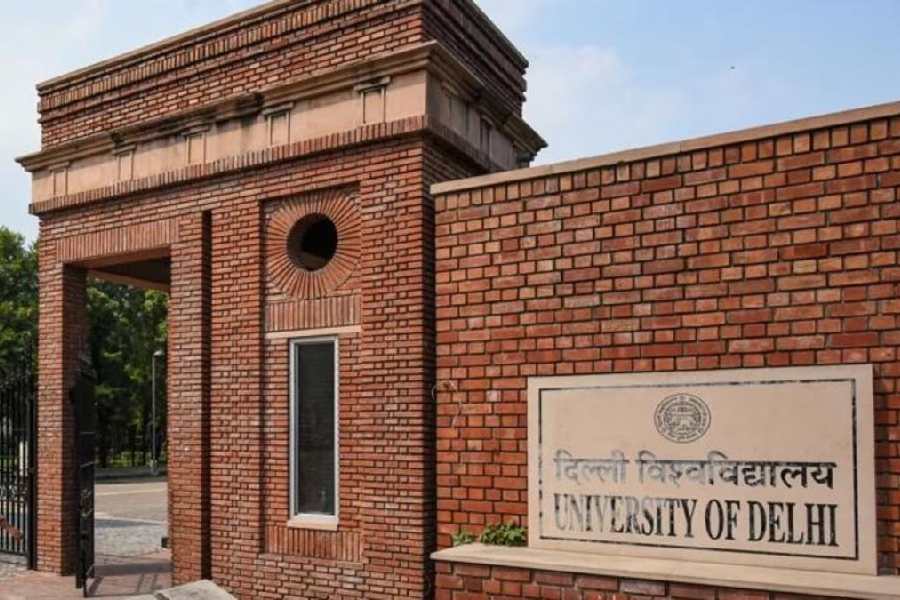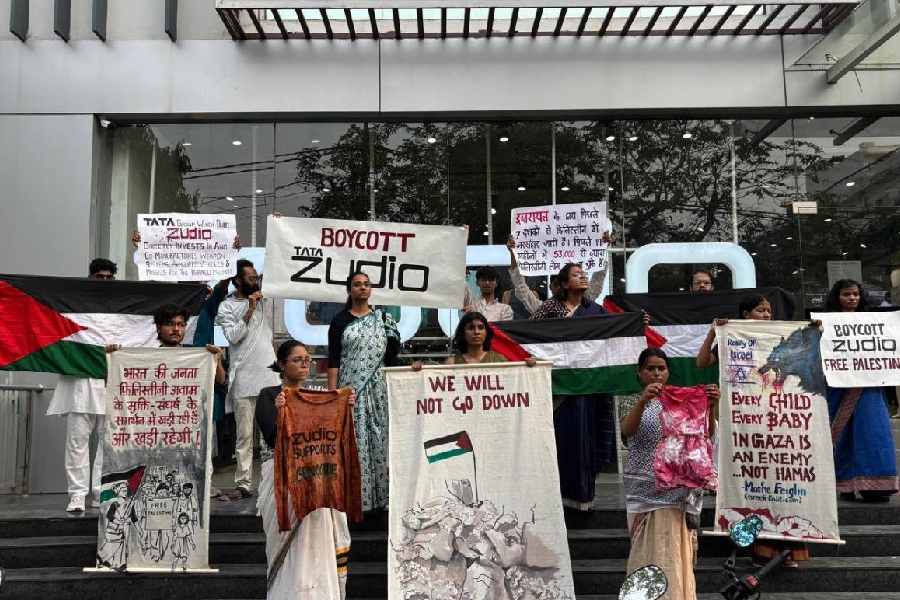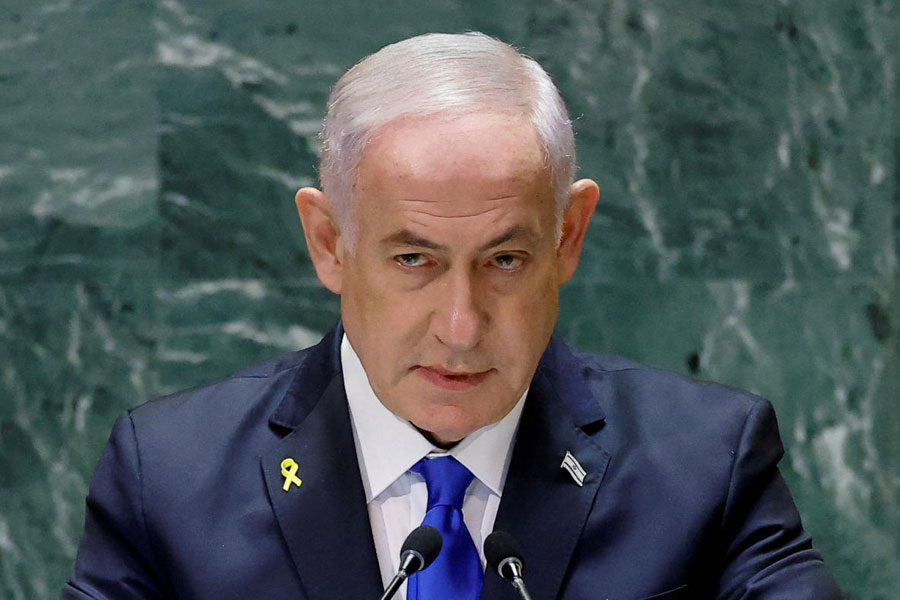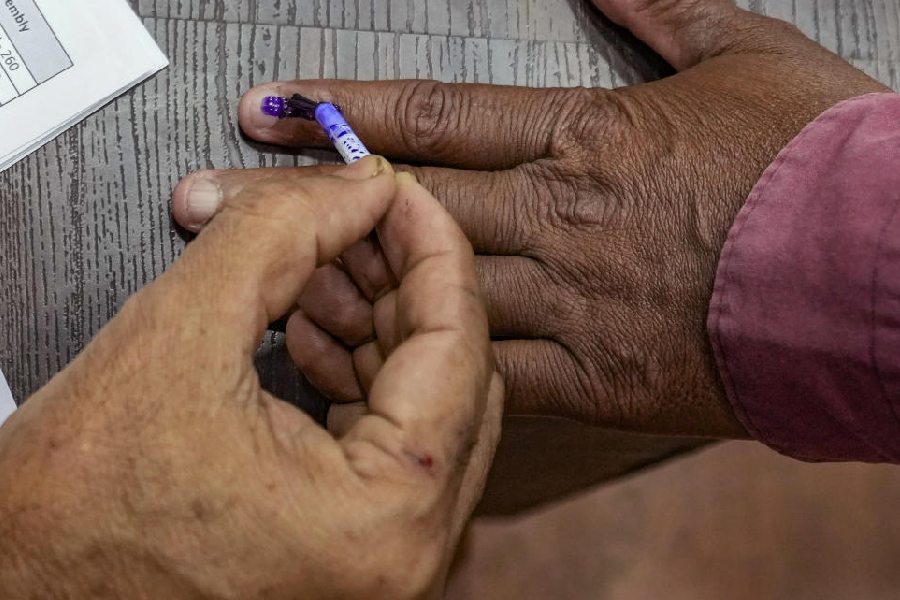 |
| An LTTE member stands watch over a news conference by the group’s political wing in rebel-controlled Kilinochchi. (Reuters) |
Colombo, March 7 (Reuters): A black string with a cyanide capsule on the end is the symbol of the fanaticism and discipline of Sri Lanka’s Tamil Tigers in their separatist war.
Those qualities that kept at bay the Indian army and held off the Sri Lankan military for two decades could be unravelling, and with them the island’s best hope of ending the war that has killed 64,000. The Tigers expelled a renegade leader yesterday, but said their command structure was in place and the internal crisis would not threaten the island’s two-year-old peace process.
But in the background, historical grievances among Tamils have bubbled to the surface in the unprecedented rift among fighters known for their loyalty to Velupillai Prabhakaran, the reclusive leader of the Liberation Tigers of Tamil Eelam (LTTE).
Prabhakaran has demanded total loyalty from his followers, and today met his top aides to discuss the next step following a challenge from veteran LTTE fighter Karuna, who was expelled for “acting traitorously to the Tamil people”. But he is still thought to command 6,000 cadres in the east.
When the war started in 1983, the Tigers were a small band of barefoot fighters, but have grown into a sophisticated and disciplined guerrilla force, known for perfecting the art of suicide bombing. That tight control meant that when the government and Tigers signed a ceasefire in February 2002, hopes were high it would last as long as Prabhakaran remained committed.
But two years later, the peace may also have brought changes to an organisation whose followers blew themselves up or swallowed cyanide rather then surrender in battle.
“The LTTE is in the process of transforming. When there was war, most of these contradictions were suppressed — there was no space for them to emerge,” said Jayadeva Uyangoda, head of political science at Colombo University. “The events in the east indicate the LTTE is not a monolithic entity. The challenge will be to see if the leadership can accommodate that diversity without resorting to violence.”
There is still no sign as to how the split will be resolved, but a battle for the hearts and minds of the people in Batticaloa-Ampara — Karuna’s district — was already under way today, with accusations flying between factions. “Everyone in the LTTE in the Batticaloa-Ampara district except Karuna is with our leader,” said Ramesh, who was named yesterday as the new eastern commander.
But forces backed by Karuna — who was a member of the Tigers’ delegation at peace talks — staged a general strike in part of the district. They say too many of the Tigers’ leaders come from the north, and complain areas in the north have received more rebuilding aid since the truce was signed.
The Tigers today likened Karuna to Pol Pot, accusing him of being like the Cambodian leader who caused the deaths of an estimated 1.7 million people in his country’s “Killing Fields”.


